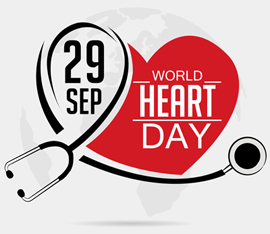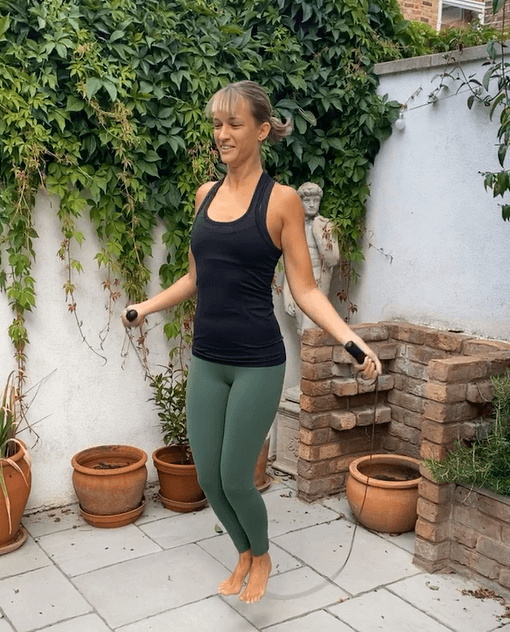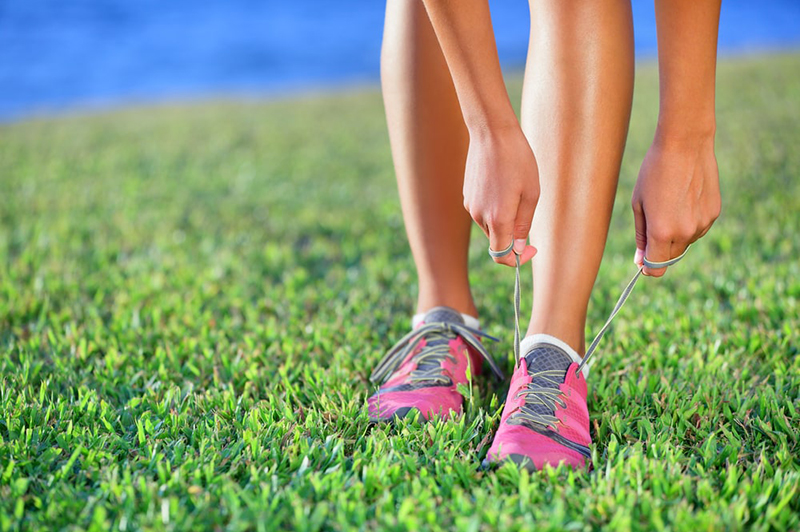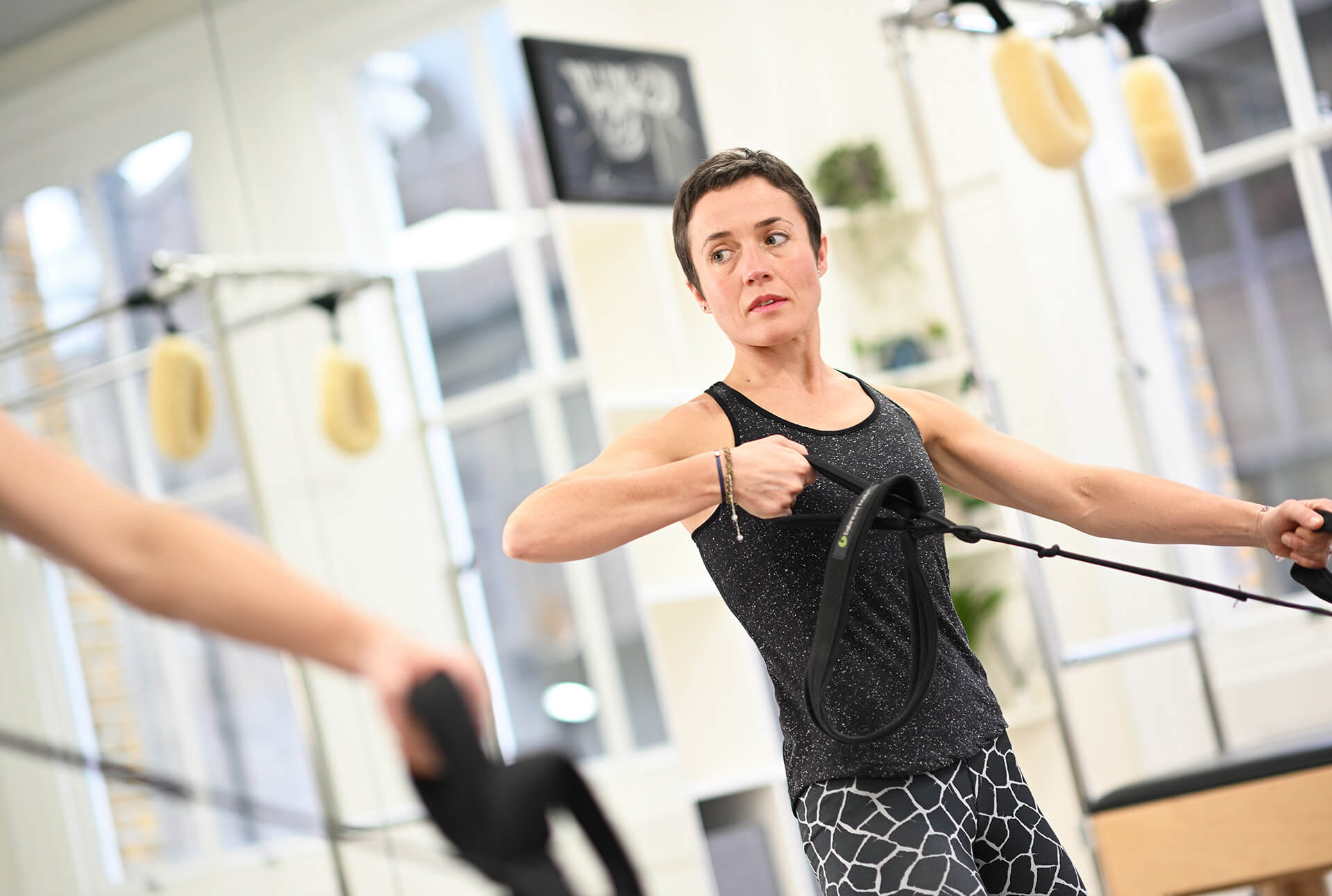Do you do regular cardio exercise?
In Pilates our main aim is not usually to get the heart rate up and the lungs working. However, we always encourage our clients to include cardio exercise at home, at the gym or in another class.
For overall health, particularly of the cardiovascular system it is vital that we train the heart and lungs just like we train any other muscle.
On 29th September it is Word Heart Day and this is a brilliant reminder to look after our hearts. Cardiovascular disease is still the most common cause of death worldwide for both men and women. Exercise is a vital and effective way of preventing new heart problems and promoting faster recovery from heart attack or cardiac surgery.

Physical exercise reduces the risk of early death in patients with coronary heart disease by approximately 40%. It also reduces the risk of hospitalisation in patients with heart failure.
Cardio exercise is essentially anything that raises your heart rate and breathing rate. The recommended amount from NHS England is 30 minutes per day and including strength exercises twice a week. This could include walking, running, tennis, cycling, circuit classes, dancing and more!

Your cardio exercise should be done at moderate intensity. If you have a heart rate monitor this is a great way to keep an eye on what level you are exercising at. However, everyone’s heart rates are different so there is no set rate. The best thing to do is gradually increase your effort until you are working hard but still able to talk in sentences of a few words without gasping. Check your heart rate and then try and keep it at that level.
This kind of cardio exercise helps your health in a number of ways;
- Keeps your heart strong (like any other muscle)
- Helps to lower your blood pressure (like a beta blocker medicine) which is important as high blood pressure is a major risk factor for heart disease.
- Helps to control your weight along with a balanced diet. Being overweight, particularly abdominal weight is a risk factor for heart disease and stroke.
- Helps to strengthen muscles. Cardio exercises improves the muscles ability to draw oxygen from the blood which means the heart doesn’t have to work so hard to supply them. This is in turn reduces the load on your heart.
- Exercise can help you to quit smoking which is another big risk factor for heart disease. People often find that combing exercise with other methods of quitting can help.
- Reducing stress levels. Exercise is a great way of reducing stress which is another risk factor for heart disease and heart attacks.
Cardio exercise can be made safe for all ages, men and women and all abilities. The best way to safely start cardio exercise is to give your self plenty of time to warm up, our hearts need time to gradually increase our heart rate.
Cardio exercise does not have to be high intensity, it can be a gradual increase in your amount of walking or gradually adding in some arm movements with your leg exercises. Cardio exercise can also be done in a chair if you or someone you know is recovering from cardiac surgery or disease. Exercise is still appropriate and can be prescribed specifically by a professional exercise specialist such as your physiotherapist or clinical exercise practitioner.
When you warm up you want to gradually increase the heart rate. Start with walking or marching on the spot. If you are fitter progress to jogging on the spot. The next thing to do is add in some arm movements and spinal movement. It doesn’t matter too much on the specific movements, the aim is to get the whole body moving and ready for exercise. Your warm-up should be around 10 minutes.
Once you have warmed up you can try the circuit of exercises below.
These are 40 seconds of effort and 20 seconds of rest. You can repeat the circuit 2-3 times.
If you find it too challenging, you can reduce the intensity by taking out the jumping elements of the movements. There should not be any pain or discomfort and you should be able to maintain speaking a few words in a sentence without gasping for breath.
If you are unsure about starting cardio exercise and would like further one to one advice, please do get in touch.
1. Cardio exercise at home – squat to toes
This is a great exercise for your whole lower body. Use your good squat technique to ensure you are sitting back into your hips, keeping the weight even in your feet and your chest lifted. As you push up from the squat keep moving up so that you pish up onto your toes. When you are up on your toes your body should be in a tall straight line with the muscles in your legs, bottom and tummy activated.
Repeat for 40 seconds and then rest for 20 seconds.
If you need to you can hold onto something to make it easier for you. Work at your own speed, slowing down if you need to or speeding up if you want more of a challenge!
2. Cardio exercise at home – criss cross
This is a classic Pilates exercise for the abdominal muscles. It is perfect for a cardio exercise though as it uses your whole body and if you increase the speed you will feel your heart working.
Lying on your back come into table-top keeping your pelvis heavy and spine in neutral. Lift the head and chest keeping the head resting into your hands and using the abdominals to turn the rib cage forwards to lift you.
Rotate through your waist and spine towards one side and reach the opposite leg away straight. Keep your chest lifted and turn from side to side with control, alternating the leg stretch as you go.
You can go faster for more of a challenge but don’t lose the control or your technique. If you need an easier version you can rest the head down and do the legs only or rest one leg down and do one side at a time.
This is a great exercise for all but should be avoided after the first trimester of pregnancy or if you have osteoporosis. In these cases the option with the head down is perfect if you are comfortable to do so.
Repeat for 40 seconds and rest for 20 seconds.
Related reading: Criss cross exercise explained
3. Cardio exercise at home – squat with arm raise
Back up in standing we are gong back to squats but this time raising the arms above the head. Including the arms in the exercise increases the work on your heart so is a great way of gradually getting your heart to work harder. If you are used to this exercise you can also dd light weights to increase the challenge.
Sit back into your perfect squat technique with the hips pushing back and chest lifted. At the same time lift the arms overhead. Watch that you keep the spine in a neutral position, when we lift the arms it can encourage us to extend the spine. If you keep the abdominals engaged by keeping the pelvis neutral and rib cage in line with the pelvis you will maintain a good technique.
If you need to make it easier you can reduce the height of your arm lift or do the arm lift and squat separately and alternate between the two.
Repeat for 40 seconds then rest for 20 seconds.
4. Cardio exercise at home – squat and walk out plank
Now we are increasing the challenge on the upper body and your trunk.
Sit into your squat position and then reach forwards to get your hands on the floor. Walk the hands forwards so that you come to a high plank position. Can you hold the high plank and touch each shoulder in turn?
Walk your hands back and sit up into the squat position again.
You can make this easier by coming down onto your knees to do the plank or by taking out the shoulder taps. To make it harder increase the speed!
Repeat for 40 seconds and then rest for 20 seconds.
5. Cardio exercise at home – sumo squat to elbow
We are changing the squat position here by taking the feet wider. This will encourage you to work harder around the hips and glutes as well as the adductors on your inner thigh.
Adding in the knee lift and twist with your elbow makes it a whole-body exercise. See if you can twist from the waist using the oblique abdominals to assist you.
If you want to make this harder you can add hand weights and add a hop into the movement to make it more high impact. To make it easier slow it down and separate the movements more.
Repeat for 40 seconds and rest for 20 seconds.
6. Cardio exercise at home – lunge to hop
This exercise challenges both your balance and your single leg strength and power. You should definitely feel your heart rate rise with this one but remember we should be gasping for breath!
Step back into a full lunge and then as you bring your leg forwards an through into a knee lift push off the front leg and hop up. Repeat this for 20 seconds on one side and then 20 seconds on the other and then rest for 20 seconds.
You can make this easier by taking out the hop and by reducing the range of movement on the lunge.
7. Cardio exercise at home – ski jumps
This is the last exercise in the circuit and I think the most challenging! Imagine you are on your skis with poles in hand and you are going to jump side to side.
Squat down, push up hard through the legs and jump to the side. Repeat this side to side for 40 seconds and then rest for 20 seconds.
You can make this harder by moving quicker and jumping as high and as far to each side as you can. You can make it easier by stepping to the side rather than jumping.
Well done! You have completed the circuit. Build up to repeating it 2-3 times and see if you can gradually increase the intensity of each exercise.
If you have any questions on cardio exercise or heart health please do get in touch. If you would like to book a one to one session you can do that by pressing the button below.
Education is key:
These blogs are designed to give information to everyone, however, it is important to remember that everyone is different! If you have not seen one of our therapists and have any questions about injuries, what you have read or whether this may be useful to you, please just ask. We are more than happy to help anyone and point you in the right direction. Our biggest belief is that education is key. The more you understand about your injury, illness and movement, the more you are likely to improve.




